Competition tricycle 3D model
Inverted Competition Tricycle
This tricycle features a striking design with two 20-gauge front wheels and one 29-gauge rear wheel. Unlike conventional tricycles, its structure is based on a cold-rolled steel frame with a thickness of 18 gauge (1.25 mm). This choice of material represented an interesting challenge, as it required a carefully optimized design to properly distribute loads and ensure structural strength.
Each design decision was made after detailed analysis. A key aspect is the inclination of the front wheel axis, both frontally and laterally, which significantly improves handling. Thanks to this specific inclination, handling feels lighter and requires less effort when turning. Furthermore, the indirect steering system provides precise and agile control, surpassing traditional systems in efficiency.
As for the seat, an optimized matrix was designed to replicate the curve in each of its ribs with a single piece, simplifying the manufacturing and assembly process. The tricycle also features a system for adjusting the distance between the seat and the bottom bracket, allowing it to be adapted to the rider's height without having to change the chain length. To achieve this, tensioners were incorporated along the chain's length, with the rear tensioner standing out, maintaining traction and allowing for constant adjustment.
This first prototype was built and tested on asphalt. While it still requires refinement in certain areas, especially the frame structure, the riding experience was surprisingly good. The riding position is comfortable, allowing for an almost reclining position that facilitates pulling the chain without great effort. During testing, a top speed of 40 km/h was reached on asphalt, maintaining stability both in curves and on straights.
The total cost of the materials used was approximately $300, not including labor, machinery, or the more than 200 hours of 3D modeling in SolidWorks dedicated to developing the project.
Download Package ContentsThe download package includes:
- All final assembly files and each of its parts in SLDPRT, SLDASM, and IGS formats.
- Detailed drawings of almost all parts.
- Exploded views for a better understanding of the assembly.
- Execution drawings, essential for prototype manufacturing.
Manufacturing Adjustments
- The 18-gauge sheet metal was laser-cut and subsequently machined using sheet metal bending machines.












